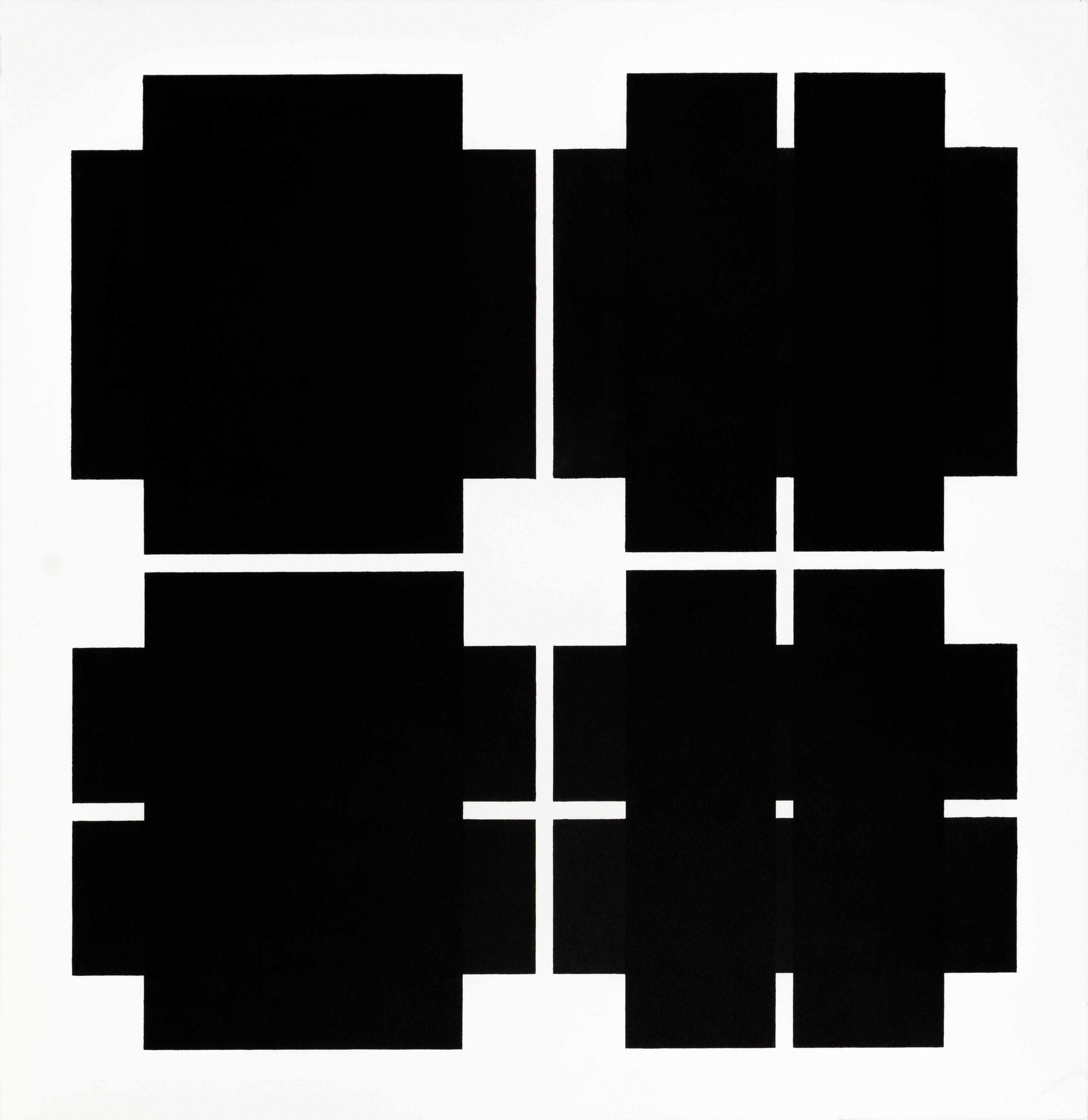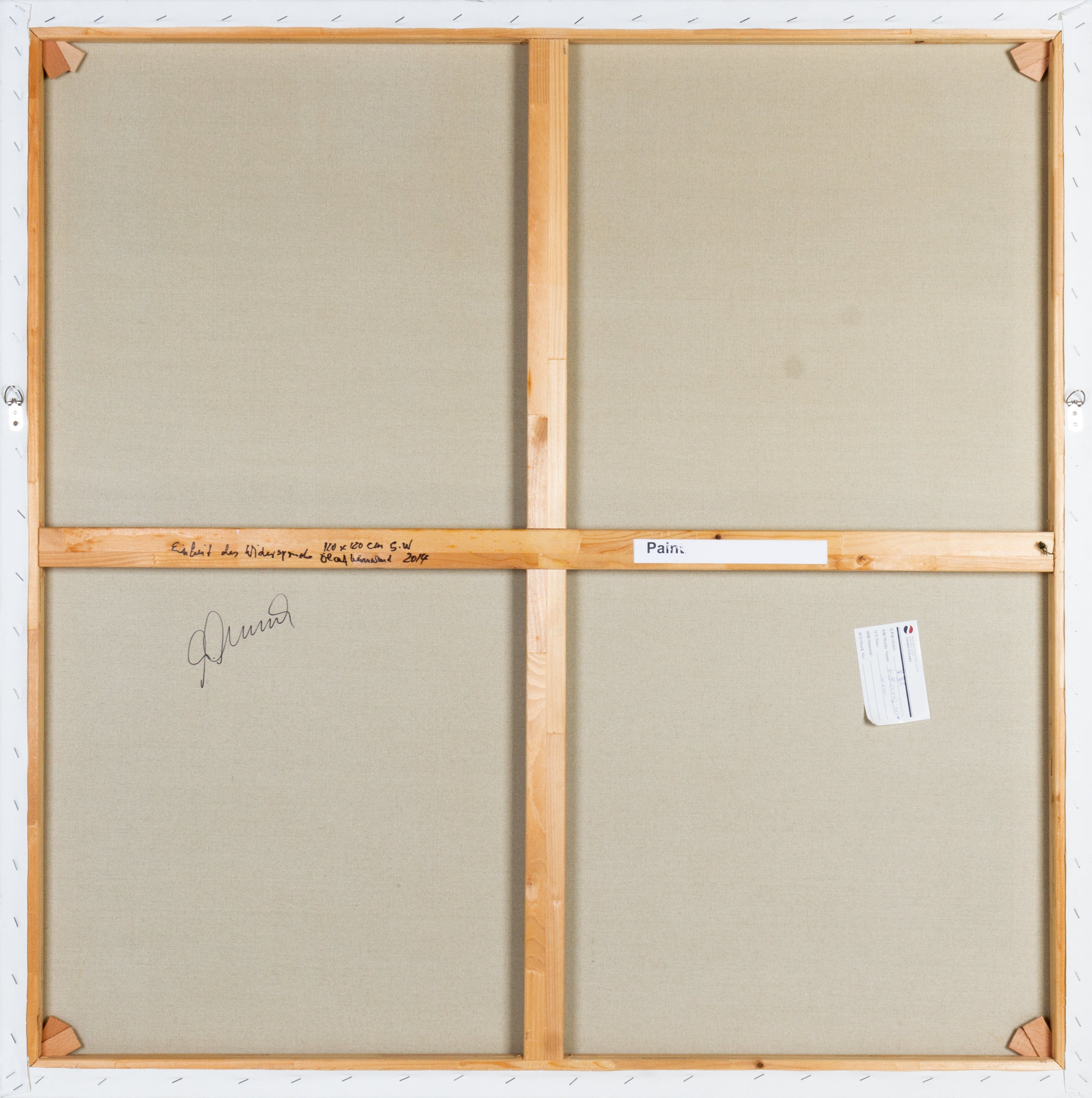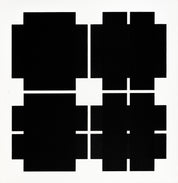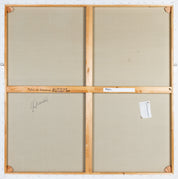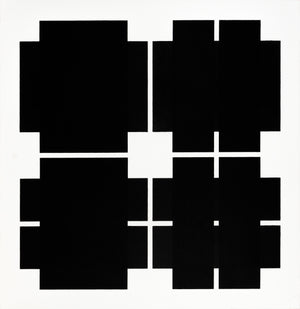Einheit des Widerspruchs
Reiner Kallhardt
Artwork Details
Artwork Description
Title: Einheit des Widerspruchs
Artist: Reiner Kallhardt
Date: 2014
Medium: Oil on canvas
Dimensions: 47.2 x 47.2 in (120 x 120 cm)
1. Artwork Identification
In Einheit des Widerspruchs (translated as Unity of Contradiction), Reiner Kallhardt presents a powerful visual statement through the interplay of four monolithic black forms arranged in a square matrix. Each form suggests a variation of a cross or block, distinguished by subtle cut-outs and offsets that shift the viewer’s perception between cohesion and disjunction. The stark black shapes against the white ground emphasize spatial rhythm, balance, and contrast.
2. Artistic Style and Influences
This work exemplifies Kallhardt’s commitment to Concrete Art, exploring systematic reduction and formal clarity. Rooted in Constructivist traditions and influenced by figures such as Josef Albers and Richard Paul Lohse, Kallhardt employs a precise geometry that avoids illusion in favor of objective structure. The painting’s symmetry is challenged by calculated asymmetries, revealing the tension that arises from internal contradictions—a visual metaphor grounded in dialectical philosophy.
3. Historical Context
Completed in 2014, Einheit des Widerspruchs belongs to Kallhardt’s late body of work, in which he continues to pursue formal rigor while increasingly engaging with philosophical and conceptual themes. The Title: invokes Hegelian dialectics or Marxist theory—suggesting synthesis through opposition—thus aligning visual abstraction with intellectual inquiry.
4. Provenance
Provenance documentation can be provided upon contact.
5. Condition and Conservation
The work is in very good condition. The black pigment retains its deep matte quality with uniform application across the canvas, and the edges remain sharp and well-defined. There are no visible issues of cracking, warping, or surface abrasion.
6. Artistic Significance
Einheit des Widerspruchs is emblematic of Kallhardt’s philosophical and artistic evolution. The work challenges the viewer to contemplate balance within opposition, harmony within fragmentation. As a visual embodiment of dialectical thought, it stands as a significant statement within Kallhardt’s oeuvre and within the broader discourse of conceptual-geometric abstraction in postwar European art.

